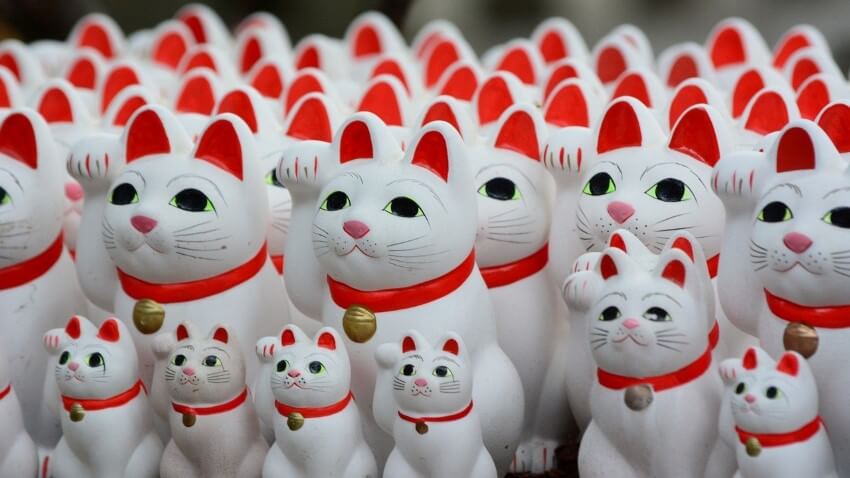Can you imagine a more advanced city on earth than Tokyo? In the 1600s, this place was just an irrelevant fishing village that significantly changed in the 1960s as one of the most developed cities in the world. During the Second World War, it was heavily bombed and most of the city’s buildings were destroyed. But the reconstruction was mainly focused on technology and the future. So where should you go to find out more about the history of this bustling city? In this article, I will introduce you to the 15 best attractions with a touch of historical significance.
15. Meet the Lucky Cats at Gotokuji Temple
Gotokuji Temple (護国寺) is a shrine in Tokyo dedicated to the Maneki-Neko. In this Buddhist temple you will find a lot of statues of beckoning cats, also called the ‘lucky cats’. Legend has it that during the Edo period (1603-1868), a priest’s cat brought a feudal landlord to safety during a thunderstorm by beckoning to him. Once inside, sipping a cup of tea, the squire was so grateful that he decided this was the place for his family tomb. Nowadays, more and more cats can be found here, as visitors come to donate their purchased lucky cat. To visit Gotokuji Temple, go to the Setagaya district.
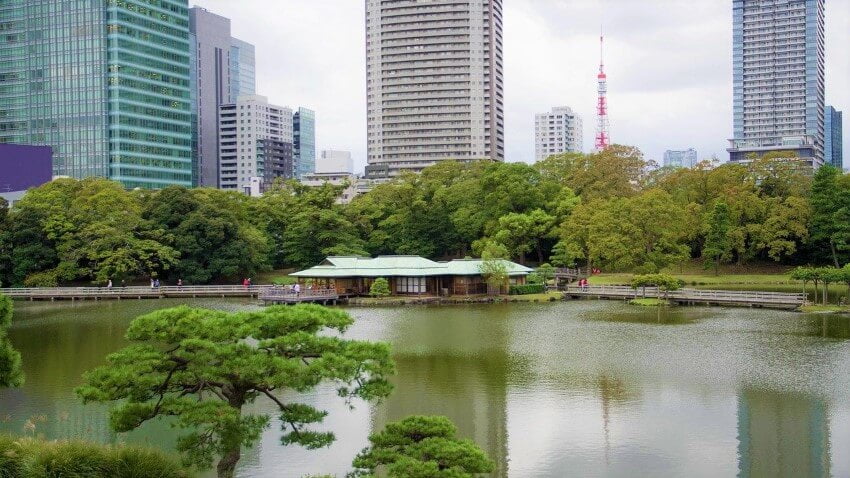
14. Visit some classic Japanese gardens
Hama Rikyu Onshi-teien (浜離宮恩賜庭園) is one of the most beautiful gardens in Tokyo. Once a residence of a feudal lord during the Edo period, it was used as a hunting ground. Nowadays, you can go for a walk or attend a Japanese tea ceremony in the tea house. This garden is located south of Tokyo Station. Another garden you can visit is the Koishikawa Korakuen (小石川後楽園). It too belongs to one of the oldest in the city and was also built for a feudal lord. Both gardens are beautiful to visit in autumn in October/November and during the blossom period in March/April.
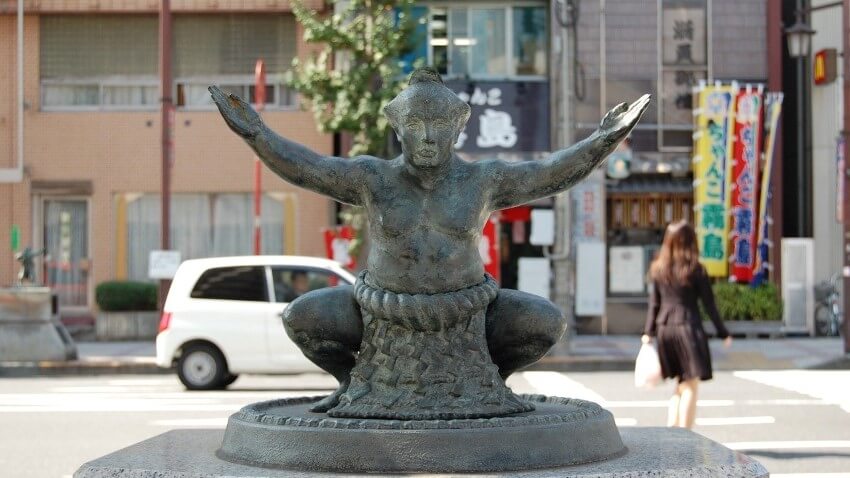
13. Visit the Sumo museum or watch a sumo match
The Ryogoku district is the place to learn more about sumo wrestling. The sport is thought to have originated in Korea, but only really became known at the Imperial Court of Japan. Therefore, anyone visiting Japan should, if possible, experience a sumo match. Tournaments are held in various cities across the country, but the most famous stadium is in Tokyo: Ryogoku Kokugikan. For more information on tickets, visit the Ryogoku Kokugikan website.
12. The most controversial temple of Japan, the Yasukuni Temple
When Shinzo Abe resigned as Prime Minister of Japan in September 2020, he visited the Yasukuni Shrine (靖国神社). China and South Korea did not appreciate his visit. In 2013 Abe did the same and also that was against the sore leg of these countries. But why really?
In the Yasukuni Temple, north of the Imperial Palace, the victims of various wars, including the Second World War, are commemorated. But the register also contains convicted war criminals, such as the then prime minister Hideko Toji (1884-1948). He was finally sentenced to death in 1948. The 14 prominent war criminals listed in the register contributed to the Japanese occupation of China and South Korea. A visit to this temple by a politician is therefore seen by these countries as an endorsement for these crimes.
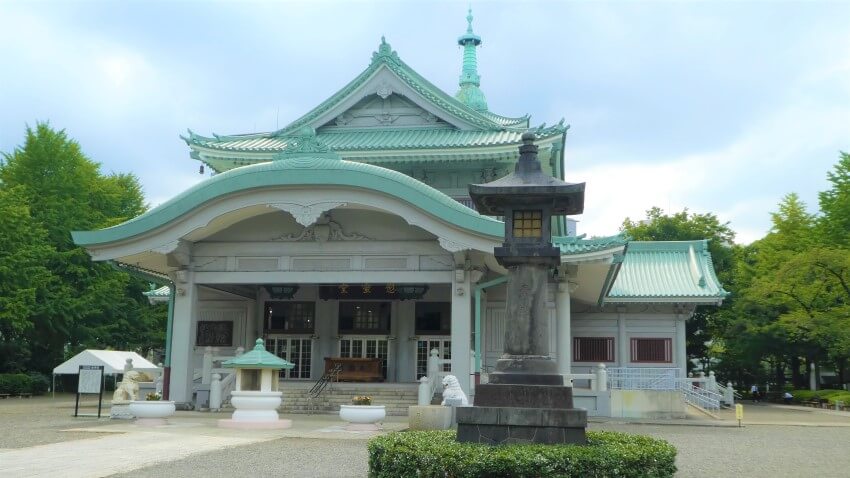
11. Visit the 1923 Great Kanto Eartquake Memorial Museum
On September 1, 1923, Tokyo was hit by one of the worst earthquakes ever. Tens of thousands of inhabitants lost their lives and a large part of the city went up in flames as a result of the force. In the Ryogoku district, close to the Edo-Tokyo Museum, a center dedicated to this great disaster, the Kanto Earthquake Memorial Museum, has been established.
The museum is not large and free to visit. Through pictures, you can see what damage this earthquake caused. You can also take a walk through Yokoamichio Park. Here you will find a number of monuments in memory of the victims. There is also a monument that commemorates the victims of the bombing of Japan during the Second World War.
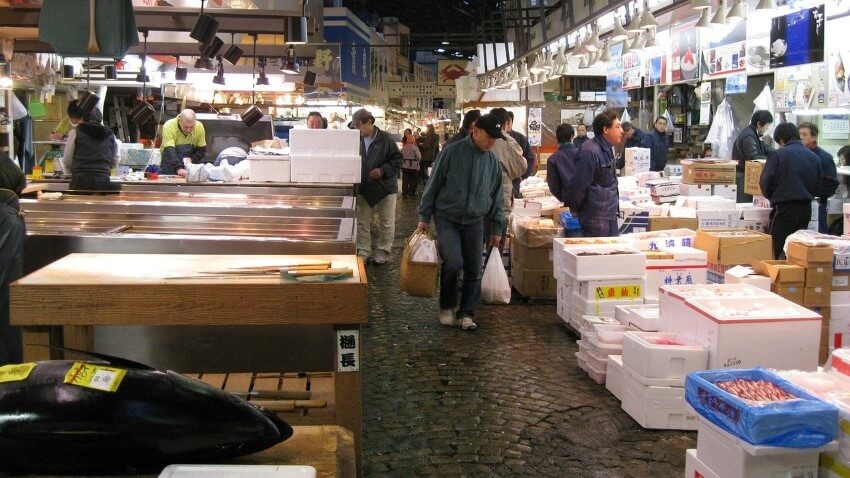
10. Eat fish in the old Tsukiji or the new Toyosu fish market
Japanese are true fish lovers. They eat the craziest fish and for the poisonous pufferfish, a cook must have a special diploma to be able to prepare it. Therefore, it is not surprising that you will come across a number of fish markets here. Until 2018 you could visit the most famous and largest of the country (or the world), Tsukiji. Unfortunately, it had to close its doors, as the working conditions at the new fish market, Toyosu, have improved considerably.
So if you want to discover the fish market well, you have to get up early for that. Around 4 o’clock it opens, but also around 7 o’clock you will see plenty of activity. And don’t forget to eat a fish somewhere. At the old market in Tsukiji, you can also eat fish in the many small stores next door. For the real market, you go to Toyosu!
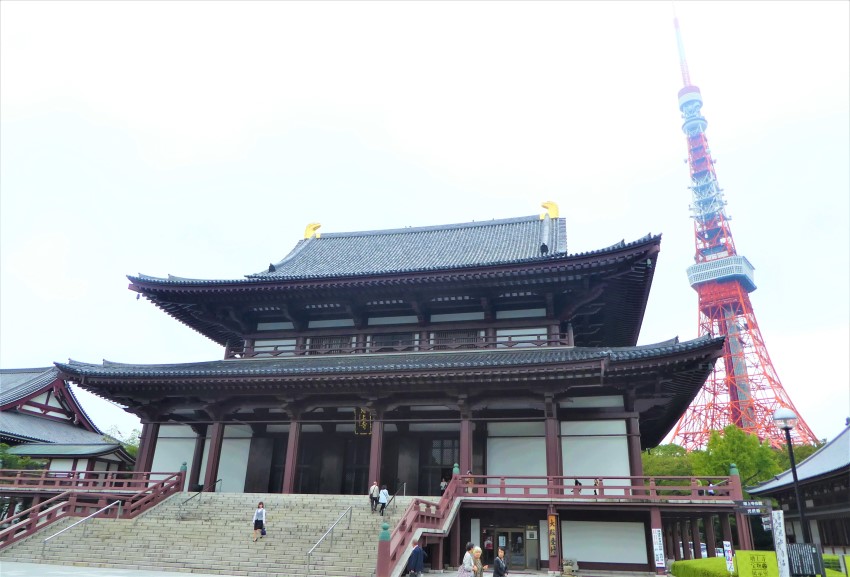
9. Enjoy the view of the city and climb the Tokyo Tower
A visit to the Zojoji Temple can be combined with Shiba Park and Tokyo Tower. The Tokyo Tower is inspired by the design of the Eiffel Tower. There are only a few differences. The Tokyo Tower is painted orange and 9 meters higher than its French brother. Also, the weight is half the weight of the Eiffel Tower.
The Tokyo Tower was built in 1958 and was the symbol for the resurrection of the Japanese economy after the Second World War and the Korean War. It serves as a television mast and can withstand heavy gusts of wind and earthquakes. And of course, you can also enjoy the view of the city from the two observation decks.
Since 2012, the Tokyo Skytree is Japan’s tallest building. Also here it is possible to have a beautiful view of the city. Of course, you have to buy a ticket for both towers to get on it. Do you want to enjoy a beautiful view over Tokyo for free? Then head to the Tokyo Metropolitan Government Buildings in the Shinjuku district. A good tip: go when it’s clear and there are no clouds around the building…

8. Go to the city’s historically most important temple: the Zojoji Temple in Shiba Park
The Zojoji Temple is a sanctuary in the Minato district. Not many tourists go here and that is a pity. Because historically, this used to be perhaps the most important temple of the city. And some members of the Tokugawa family, the former rulers of Japan, are buried here. This was also the center of Pure Land Buddhism. This movement within Buddhism is now one of the most popular in East Asia.
Would you like to know more about the Zojoji Temple and Pure Buddhism? Then read the article Zojoji Temple | Why Tokyo’s most important temple?
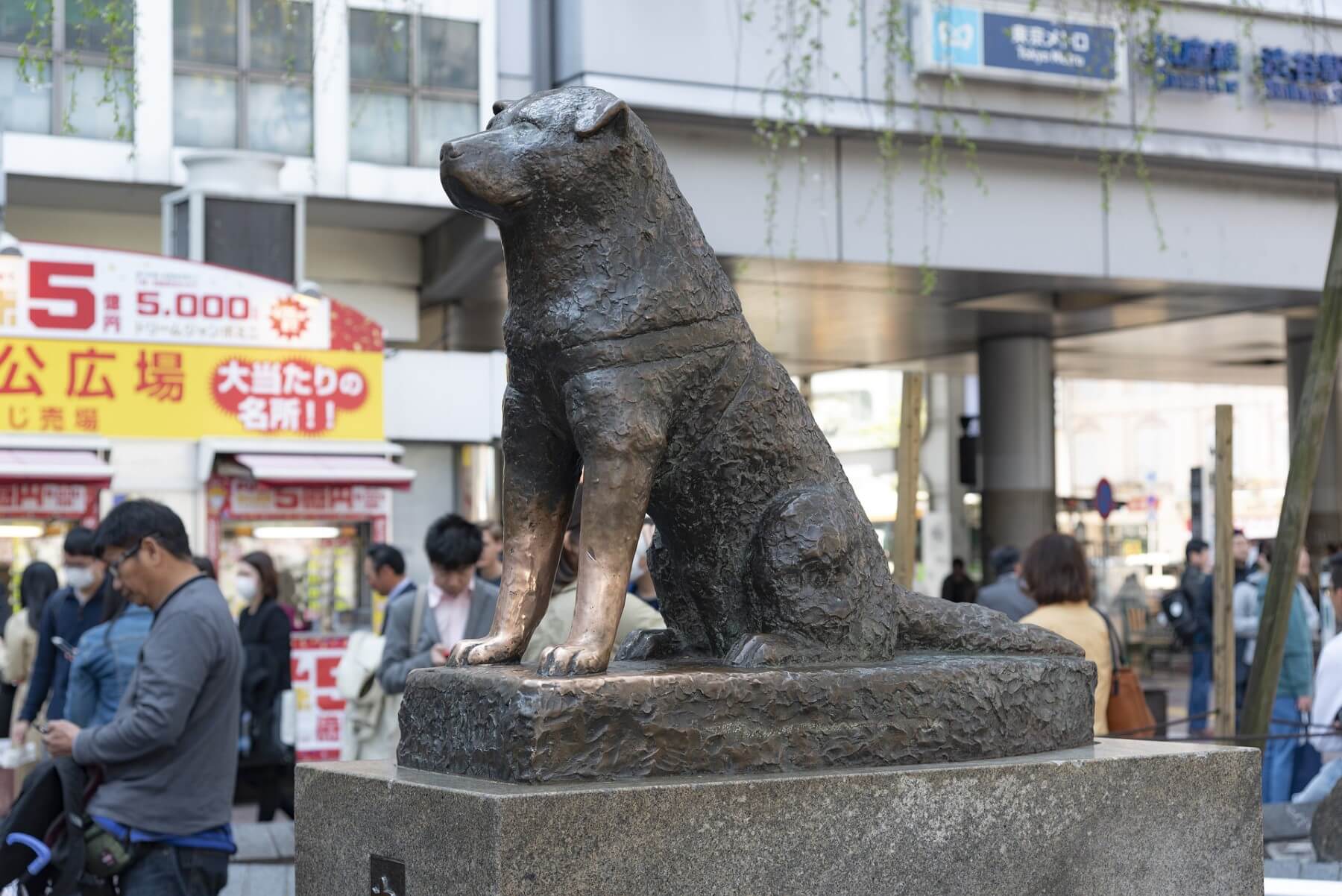
7. Walk across the busiest crossroad in the world, Shibuya Crossing and meet the dog Hachiko
The busiest intersection in the world is located in the district of Shibuya. Every hour tens of thousands of people across the crosswalks, but beware! Be back on the other side in time, before the traffic starts moving again. And don’t bump into anyone! Strange as it may sound, Shibuya Crossing is an exciting experience in itself.
But while you’re here, will you take a picture with Hachiko? This Japanese dog of the Akita breed is considered one of the most loyal dogs in the world. He lived in the thirties of the last century and after his death, it was decided to put a bronze statue in front of him here.
Do you want to know exactly what the story of Hachiko is? Read the article Shibuya Crossroads, Tokyo | How Hachiko became the most loyal dog in the world…
6. Visit Japan’s largest museum, the National Museum of Tokyo
If you like to go to Museums, don’t skip the National Museum of Tokyo (東京国立博物館). This is the largest museum in Japan and is also one of the top 10 largest museums in the world. It consists of several buildings with various exhibitions, but the collection consists mainly of Asian art.
Examples from the large collection include antique Buddhist statues, ceramics, the traditional clothing of the samurai and weapons, costumes, and masks. You can also stroll through the gardens of the museum and enjoy a delicious cup of tea in one of the classic Japanese tea houses.
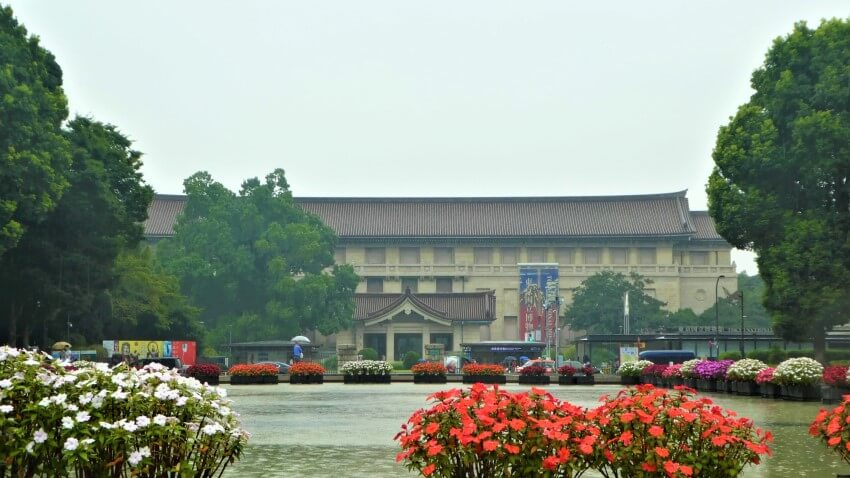
5. Walk through Ueno Park and visit Kaneiji Temple
Ueno Park (上野恩賜公園) is located in the Ueno district north of downtown Tokyo. In 1924 Emperor Yoshihito donated the park to the city. Since then, it has been one of the busiest public parks in the city.
In the months of April and May, it is Ueno Onshi Kōen, the official name of a beautiful place to enjoy the beautiful blossom. But there is more. Here you will find several statues, including the important Dutch doctor Dr. A.F. Bauduin (1820-1885), but also Ueno Zoo a Toshogu shrine, and several museums. The most famous museum is the National Museum of Tokyo.
But at the time of the Edo-shogunate (1603-1868) stood here the most important temple of Tokyo, the Kaneiji Temple. This temple was built in 1625 to defeat enemies from the northeast of the city. A large part of the current Ueno Park consisted of this temple. During the Boshin War of 1868-1869, a large part of the Kaneiji Temple was destroyed. What remains can be found north of Ueno Park.

4. Experience the city’s history in the futuristic Edo-Tokyo Museum
The best way to experience the city’s history is to visit the Edo-Tokyo Museum in the Ryogoku district. It’s housed in perhaps one of the strangest buildings you’ve ever seen. Designer was Japanese Kiyonori Kikutake (1928-2011). He can be seen as one of the most important protagonists of Metabolism. This typical Japanese style of architecture aimed to design buildings that could easily be adapted to the needs of the future. The Edo-Tokyo Museum is a good example of this.
The museum gives a good insight into the more than 400 years of history of the city of Tokyo. Feel free to take a few hours to explore it or have a guided tour with the free guides available at the entrance of the museum. They will be happy to tell you about the ups and downs of the city of Tokyo.
But if you already want to know more about it? Read the article Edo-Tokyo Museum | 400 years of history in a special museum.
Finally, the Ryogoku district east of the city center is known as the center of sumo wrestling. Don’t skip the small Sumo museum in the Ryōgoku Sumo Hall.

3. Go to the Meiji Jingu Shrine to honor Emperor Meiji
The Meiji Jingu Shrine is a sanctuary in the Harajuku district. It is surrounded by trees and a walk to this temple gives you a mystical feeling of relaxation and tranquility. An ideal moment to escape the busy city, right? The Meiji Shrine was built at the beginning of the twentieth century in honor of Emperor Meiji and his wife. It was mainly this emperor who laid the foundation for Japan as a modern society. A visit to his temple should therefore not be missed.
Would you like to know more about why Emperor Meiji was so important to Japan? Read the article Meiji Shrine, Tokyo | Tribute to Emperor Meiji in a beautiful park.

2. Visit the gardens of the Kokyo Imperial Palace in Chiyoda
The heart of the city is formed by the Kokyo Imperial Palace in Chiyoda. Since the year 1603, it has been the center of power in Japan. Then it was called the Edo Castle. Until 1868 the Tokugawa family lived here. They were for more than 250 years the most important rulers of the country. In 1868, when the system of landlords and the samurai was abolished, the emperor moved into the palace.
The Kokyo Imperial Palace is not open to visitors. However, it is possible to attend an organized tour around the palace. The Imperial Gardens can be visited free of charge a few days a week. Here you will find remnants of the former Edo Castle.
Would you like to know more about the history and backgrounds of this castle? Read all about it in the article Imperial Palace, Tokyo | Follow the route along the former Edo Castle

1. Discover the Sensoji Temple in the cozy neighborhood of Asakusa
With more than 8 million visitors a year, the Sensoji Temple is the city’s main attraction. Therefore, it can be quite crowded there, but you should definitely not skip this colorful place. It is located in the cozy Asakusa district north of downtown Tokyo. This temple is all about a mysterious golden statue of Kannon, the god of grace.
And besides visiting the temple you can also take a walk through the Nakamise Dori, the oldest street in Tokyo. Here you can find nice Japanese souvenirs and enjoy the most delicious Japanese dishes.
Would you like to know more about the history and backgrounds of this beautiful colorful temple? Then read the article Sensoji Temple Tokyo? 5 historical facts you need to know!
Of course, there is much more to experience in this large metropolis. Do you have any tips about special places in Tokyo? Then feel free to leave a message below!
